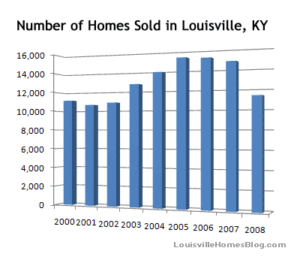Mark Twain popularized this famous quote, “There are three kinds of lies: lies, damned lies, and statistics.” By their very nature, numbers can be manipulated to show many results, even opposing ones, and still be factually accurate.

Louisville Foreclosures Fewer Than Nation
In the world of real estate, this is true as well. But careful attention usually discerns the treasures within.
Organizations collect and manipulate data in a myriad of ways. Then when the time comes to report, let’s say home sales in Louisville, do they include all homes? What about condos? They’re “homes” too!
How about the surrounding counties? Most of us consider Oldham County part of Louisville, right? Then, there are distressed homes, such as foreclosures and short sales. And I haven’t even talked about transactions that take place off the grid and don’t get recorded.
All this to say, one person’s data may not always jive with another’s.
The reason I bring this up today is that in June, USA Today reported that foreclosures may have crested. A welcomed message to be sure:
Almost 8% of U.S. home loans were at least 30 days past due in April but not yet in foreclosure. That was up slightly from March but down 16% from a year ago, says LPS Applied Analytics, which tracks the mortgage market.
Down 50 percent, woohoo! Now, let’s try to compare that with data from CoreLogic, a leader in real estate data analysis.
| Location | 90+ Day Delinquency Rate July 2011 | 90+ Day Delinquency Rate July 2010 | Change | Foreclosure Rate July 2011 | Foreclosure Rate July 2010 | Change |
|---|---|---|---|---|---|---|
| US | 7.20% | 7.89% | -0.69% | 3.44% | 3.20% | 0.24% |
| Kentucky | 5.27% | 5.06% | 0.21% | 2.68% | 2.10% | 0.58% |
| Louisville | 5.85% | 5.74% | 0.11% | 2.91% | 2.38% | 0.53% |
Wait… what?!? Keep in mind that this data is for July, not June, but there are several take-away’s.
- It doesn’t appear that the CoreLogic data lines up with LPS Applied Analytics data from the USA Today piece.
- For the nation, delinquency has dropped in the past year but the end results (foreclosures) haven’t caught up yet.
- Kentucky is faring better than the national average.
- Louisville is performing slightly worse than the state as a whole, but better than the nation.
Also noteworthy, delinquency rates aren’t strictly linear. There’s movement from month to month. Back in July 2009, Louisville’s rate was 5.21 percent. It got as high as 6.35 percent in January 2010, then it started to come back down.
By the end of the year, it was just 5.89 percent and it appeared we were heading out of the housing depression storm. But here we are six months later and still at roughly the same level.
What does it all mean?
At the end of the day, I’d rather live here in the far less volatile housing market of Louisville than, say, places such as Las Vegas or Tampa. The flip side is that when trends, whether they be social or technological, start to make their way through the country, we do seem to “get them” later than most cities.


